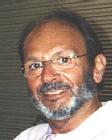pilot: More about naming
pilot: More about naming

Dear Radio Friends,
Our continuous team search work in order to find out the reasons of some discrepancies brought us out some good news about those two different Pilot 203 versions named by Rmorg :"Pilot 75 tube" & "Pilot 76 tube".
Yesterday, José Duarte Costa shows me a book: "Tube Complement Book with IF-Peaks" From Sylvania. 1938-1939.
Here is a piece of it:

This book also consider two variants of this Pilot 203.
But, it calls them differently. It call them "Early" and “Late”.
It means that these two versions had a chronologic manufacturing sequence. It was not an error of manufacturing or a temporary 76 tube stock break...
First, Pilot manufacturer produced an Early Pilot 203 . Afterwards Pilot produced a Later Pilot 203. Tube series were different.
Why not us,to call these model variants ”Early" and "Later" too, instead of 76 and 75?
Do You agree?
Best Regards
Mário Coelho
To thank the Author because you find the post helpful or well done.
Simple reason
Dear Mario
Nice that you have brought up this question.
It is simply because we should not and can not change our rules according to each different case or different book etc.
We had introduced first "new" and "old" but then found it is much more practical that we directly show the difference in the field "varant". Often it is the tube. But it can for instant be "changer" and "player" (gramophone) or something like "white knows" and "black knobs". In case of a big difference in years it can also be "1936" and "1957" (where it is easy to see the difference).
Reason:
Somebody having the set does not see any "old" or "new". He even sees probably exactly the same pictures. By giving diractly the reason he can find on or in the set we enable him to tell which model he/she has. We stick to OUR rules, which at the same time must have the most common groundings.
Important:
Both models (or all) must have a wording in the field variant and a variant is only given if the model name is exactly the same. So "variant" is something WE invented to distinguish where the maker did not distinguish.
Please if possible do enter some wordings about the sets explaining more the difference in the notes if that helps. Then please repeat the model name(s), maybe even the maker. This enables the model page a better ranking by search engines. The same is for any useful content in the notes for a model.
Our problem is that we show more than 100 000 model pages to the serach engines (but only the version in English!) and the headings for the page and for the lines are always the same. This gives the impression to searching engines that we create SPAM if we do not sophisticatedly ad some content which differs as much as possible for each model page!
I use some 50 to 70 links to other models at the (normal) end of a model page in case of a user without having our cookie (first time visit) because the SEs (search engines) never show a cookie. You can try this by deleting all cookies (or ours) and entering then as a guest. But if you click a language flag (as you are told then) you get the cookie and this will vanish. There is much more behind our system than you might think ;-)
To thank the Author because you find the post helpful or well done.
Physical shape

Dear Ernst,
Thank You for your explanation.
I welcome to all the rules which can improve the model searching in Rmorg.
I also think that is very wise to use the external physical shape (1) to identify the unique name's models variants.
Unfortunately I didn't know that those rules existed.
I even had seen a “Later” in a recent post about one Bosch 360 Later, http://www.radiomuseum.org/r/united_360.html
and in same manufacturer list, there is one Bosch 5A Early
http://www.radiomuseum.org/r/united_5_a5.html
Nevertheless, I think that our work was not in vain, I thank José Duarte Costa for his book, which shows us that:
!!First, there was an earlier Pilot 203 (76tube) and afterwards there was a later Pilot 203 (75 tube)!! Or is this not important for a collector?
Now, how to deal with future similar cases?
(1) A set may have also other physical differences, not only the tubes..
If so, what to choose first as a prior variant item ? Tube series? Cabinet colour?; Knobs? ;Dial-Scale?
To thank the Author because you find the post helpful or well done.

Dear Mario,
In Riders18-6 You find the models X203 and X205 (for our variants "75 tube") as You can find them in "Machine Age to Jet Age" too. On the other hand Your radio diplays a rather careless denomination by the manufacturer (not distinctive). Not at all Your fault. I am blaming Pilot!
A collector searching for his model doesnt know if early or late, but the tubes are certainly visible.
Early and late may serve if not so significant properties are obvious.
Anyway we have to find a useful solution and update the models accordingly.
The problem will be considered.
Thanks
regards,KoBi
To thank the Author because you find the post helpful or well done.

Dear Mario,
I rearranged the model naming in a way to improve the search capabilities. The early and late is useless, since there is no hint on a model for that. But the tubes can be seen. Even the socket itself can tell:
- 5 prong for the 76,
- 6 prong and top contact for the 75.
We arrived now at four models (the other two became obsolete):
- 203 76 tube
- 203 (X203) 75 tube
- 205 76 tube
- 205 (X205) 75 tube
The respective models got a (forum) note.
To thank the Author because you find the post helpful or well done.
